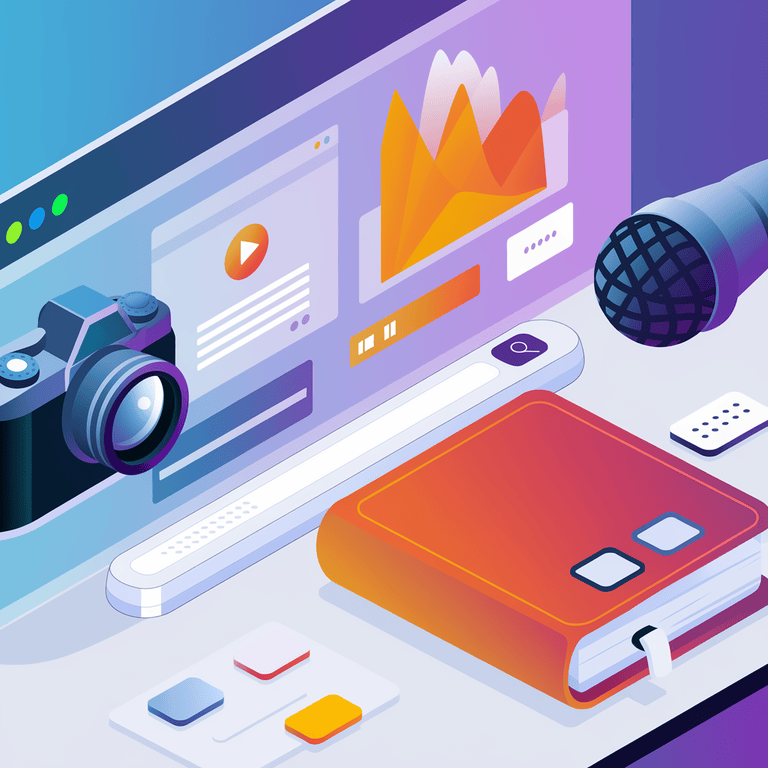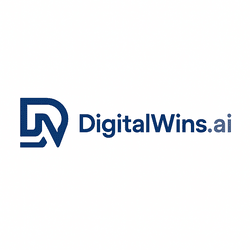In today’s digital world, digital asset management (DAM) plays a crucial role in maintaining a website’s search engine optimization (SEO). Digital assets include images, videos, audio files, PDFs, and other media that are essential to modern websites and content strategies. However, simply creating or uploading digital assets isn’t enough. To maximize their value, these assets need to be optimized for search engines.
This is where Artificial Intelligence (AI) comes in. AI is revolutionizing the way digital assets are managed and optimized for SEO. By leveraging AI tools, businesses can ensure their digital assets are indexed correctly, more easily found by search engines, and ultimately, rank better.

What is Digital Asset SEO?
Digital asset SEO refers to the process of optimizing various forms of digital content, such as images, videos, infographics, documents, and other media files, to improve their discoverability and ranking on search engines. Just like traditional SEO, it involves making digital assets easy for search engines to understand and index. However, digital asset SEO requires a unique approach due to the different formats and complexities of media content.
Types of Digital Assets
Digital assets come in many forms, and each type requires different SEO considerations. These can include:
- Images: Pictures, graphics, logos, and any visual content
- Videos: Any video content such as tutorials, promotional videos, or interviews
- Documents: PDFs, whitepapers, case studies, and eBooks
- Audio files: Podcasts, voiceovers, and music files
- Infographics: Visual representations of data or information
Each of these assets contributes to the overall user experience on a website and can impact SEO performance. But optimizing them for search engines can be time-consuming and complex without the right tools.
Importance of Optimizing Digital Assets for Search Engines
Optimizing digital assets for SEO is vital for improving visibility, engagement, and traffic. Search engines can’t “see” images or watch videos, but they can read metadata, captions, file names, and text that accompanies these assets. Without proper optimization, even the best assets may not show up in search results. The better optimized these assets are, the more likely they are to drive traffic, generate leads, and improve conversion rates.
How AI is Revolutionizing Digital Asset SEO
Artificial Intelligence is helping marketers and SEO experts tackle the complexities of digital asset optimization. AI automates tasks, analyzes patterns, and provides insights that help refine SEO strategies. By incorporating AI into digital asset SEO, businesses can save time and achieve better results.
Overview of AI’s Impact on SEO Strategies
AI’s role in SEO has grown over the years, and now it extends to digital asset management. From understanding the content of images to generating metadata for videos, AI enhances almost every aspect of SEO. It can analyze millions of data points in a fraction of the time it would take a human. This allows businesses to optimize their assets quickly and effectively.
AI tools can help with:
- Automating repetitive tasks: Such as generating alt text or organizing assets
- Identifying optimization opportunities: By analyzing data and trends
- Predicting performance: AI tools can suggest the best types of content based on previous performance
AI-powered Tools for Analyzing and Optimizing Digital Assets
Several AI-powered tools are available that make digital asset SEO more efficient and effective. These tools use machine learning algorithms to scan digital assets and provide recommendations for optimization. Popular tools include:
- Google Vision AI: Analyzes images and generates alt text, labels, and categories
- Clarifai: Uses AI to detect objects and scenes within images and videos, making it easier to tag and classify assets
- DeepAI: Provides image captioning and automatic tagging for media
- ContentKing: Monitors and optimizes metadata for videos and images in real time
These AI tools automate tedious tasks, making it easier for businesses to keep their digital assets optimized and up to date. Instead of manually entering alt text or captions, AI tools can handle these tasks automatically, allowing teams to focus on higher-level strategy.
Key AI Techniques for Optimizing Digital Assets
AI is not only helpful in identifying areas for optimization but also in applying the right techniques to improve digital asset performance. From images to videos and PDFs, AI can assist in optimizing every type of asset in unique ways. Here are the key AI techniques that are changing how digital assets are managed for SEO.
Image Recognition and Alt Text Generation
Images are an essential part of any website, but search engines can’t interpret what’s in an image unless it’s properly described. Enter AI-powered image recognition. AI can analyze images, identify objects, and generate detailed alt text automatically.
This technique is beneficial for several reasons:
- Saves Time: Instead of manually writing alt text for every image, AI tools can generate it quickly.
- Improves Accessibility: Alt text provides descriptions for users with disabilities, making your content more inclusive.
- Boosts SEO: Accurate and descriptive alt text helps search engines understand the content of the image, improving the chances of ranking for relevant queries.
AI tools like Google Vision and Clarifai are commonly used to detect objects within images and generate corresponding alt text that is both accurate and optimized for SEO.
Video Metadata Optimization Through AI
Videos are powerful assets that engage audiences and drive traffic, but they require careful optimization to be discoverable on search engines. AI is particularly useful in optimizing video metadata, which includes elements like titles, descriptions, tags, and timestamps.
AI techniques can:
- Analyze video content: AI tools can understand what’s being discussed in a video, which allows for more accurate tagging and description creation.
- Automatically generate video transcripts: By transcribing the audio, AI makes the video content accessible to search engines.
- Suggest keywords: Based on the video content, AI can recommend relevant keywords and phrases that improve video SEO.
Platforms like IBM Watson and Trint offer AI-powered transcription and metadata tools that help businesses optimize their video assets for search engines without having to manually go through the process.
AI-Driven Content Tagging for PDFs and Other Documents
For documents like PDFs, AI can automate content tagging, allowing them to be indexed by search engines. AI scans the document’s content, detects important keywords, and tags it accordingly. This helps ensure the document is categorized correctly and easily discoverable by users.
AI can:
- Extract key information: From a PDF or document, making it easier to find and index.
- Tag content with keywords: Automatically add relevant keywords based on the document’s content.
- Generate summaries: Help users quickly understand the document’s key points.
Tools like Adobe Sensei and Paperpile use AI to tag and organize documents, ensuring they are SEO-friendly and user-friendly.
Automated File Naming and URL Structure Optimization
The way files and URLs are named can make a big difference in SEO. AI tools can automatically generate optimized file names and URLs based on the content, improving both user experience and SEO performance.
- Optimized filenames: AI can analyze the content of images and videos, then create file names that reflect their content and include relevant keywords.
- SEO-friendly URLs: AI can help structure URLs that are clean, descriptive, and keyword-rich, making it easier for search engines to index them.
For example, an AI tool might rename an image of a dog to “golden-retriever-playing-in-park.jpg” rather than “IMG12345.jpg,” helping search engines understand exactly what the image is about.
Benefits of AI in Digital Asset SEO
Integrating AI into your digital asset SEO strategy can offer a wide range of benefits. From improved efficiency to enhanced performance, AI helps businesses optimize digital content like never before. Here are some of the major benefits of using AI in digital asset SEO.
Improved Efficiency in Content Optimization
AI can process and optimize large quantities of digital assets at once. Instead of manually optimizing every image, video, or document, AI tools can handle these tasks in seconds. This increases efficiency and allows teams to focus on more strategic aspects of SEO.
- Time-Saving: AI automates repetitive tasks like writing alt text, renaming files, and tagging content.
- Mass Optimization: AI can optimize hundreds or thousands of assets simultaneously, something that would take a team days or even weeks to accomplish manually.
Enhanced Search Engine Rankings Through Better Asset Management
When digital assets are optimized correctly, they are more likely to appear in search results. AI ensures that every asset is appropriately tagged, described, and structured to improve SEO performance.
- Better Discoverability: Optimized digital assets are more likely to be found by users and search engines.
- Improved User Experience: AI can enhance accessibility and engagement, which positively impacts user experience and, in turn, SEO rankings.
- More Accurate Search Results: By generating more accurate metadata and descriptions, AI helps search engines match your digital assets with relevant queries.
Faster Indexing and Better Discoverability
Search engines prioritize websites that load quickly and provide relevant content. By optimizing digital assets with AI, businesses can reduce load times and improve their visibility in search results. AI can also ensure that assets are easily crawled by search engines, speeding up the indexing process.
- Faster Loading Times: AI can optimize the size of images and videos, improving load times.
- SEO-Friendly Crawling: Properly tagged and structured digital assets make it easier for search engines to crawl and index content, ensuring that it gets found quicker.
More Personalized Content Suggestions for Users
AI can help personalize digital content for users based on their behavior and preferences. For example, AI can recommend similar videos, images, or articles based on what users are engaging with. This improves the user experience and increases the likelihood of conversion.
- Content Recommendations: AI suggests related content, keeping users engaged on your site longer.
- Tailored User Experience: Personalized content suggestions help businesses connect with users in more meaningful ways.
AI doesn’t just help optimize digital assets; it also plays a crucial role in enhancing the user experience, which ultimately benefits SEO performance.
Best Practices for AI-Driven Digital Asset SEO
While AI offers powerful tools for optimizing digital assets, it’s important to follow best practices to ensure maximum effectiveness. Here are some strategies to make the most of AI when managing your digital assets for SEO.
Optimizing Image and Video File Sizes for Better Performance
File size can significantly impact both the user experience and SEO. Large images or videos can slow down a website, leading to a poor user experience and lower rankings on search engines. AI can help optimize file sizes without sacrificing quality, leading to faster load times.
Best practices for optimizing file sizes:
- Compress images and videos: AI tools can reduce file sizes while maintaining quality, making them quicker to load.
- Choose the right file format: AI can suggest the best formats for different types of media (JPEG, PNG for images, MP4 for videos).
- Resize images: AI can automatically resize images based on the needs of the webpage, preventing unnecessary bandwidth consumption.
By reducing file sizes, your site will load faster, improving both the user experience and your chances of ranking higher in search engine results.
Using AI to Identify Keyword Opportunities for Digital Assets
AI can analyze your digital assets and identify keywords that can improve their SEO performance. By leveraging AI’s data-driven insights, you can target high-traffic keywords and optimize your assets accordingly.
How AI helps with keyword optimization:
- Analyzes existing content: AI can scan your digital assets and suggest relevant keywords based on content and search trends.
- Identifies gaps: AI can identify keyword opportunities that may have been overlooked, allowing you to target under-served search queries.
- Predicts keyword trends: AI tools can forecast rising keyword trends, helping you stay ahead of the competition.
By aligning your digital assets with popular and relevant keywords, you increase the chances that your assets will appear in search results for those terms.
Ensuring Accessibility Through AI-Generated Captions and Transcripts
Accessibility is an important aspect of both SEO and user experience. AI can automatically generate captions for videos and transcripts for audio files, making your content accessible to users with hearing impairments and helping search engines index your content.
Benefits of AI-generated captions and transcripts:
- Improved Accessibility: Automatically generated captions ensure that users with hearing impairments can enjoy your videos.
- Enhanced Searchability: Search engines can crawl captions and transcripts, which helps improve the visibility of your video and audio content.
- Better User Engagement: Offering captions allows users to engage with content in noisy environments or while multitasking.
Tools like Rev.com and Otter.ai use AI to transcribe videos and audio automatically, saving you time while improving accessibility.
Regularly Auditing and Updating Digital Assets with AI Tools
SEO is not a one-time task—it requires ongoing attention. As content trends evolve, so should your digital assets. AI tools can continuously audit and update your assets to keep them fresh and relevant for both users and search engines.
Regular auditing best practices:
- Automate audits: Use AI-powered tools to perform audits on your digital assets and identify areas for improvement.
- Update metadata: AI can help you keep metadata up-to-date, ensuring your assets remain optimized.
- Track performance: AI can track the performance of your digital assets over time, helping you see which ones need further optimization.
AI enables you to stay on top of your digital asset SEO efforts without manually reviewing every image, video, or document.

Challenges and Considerations in Digital Asset SEO
While AI brings many advantages to digital asset SEO, there are some challenges and considerations to keep in mind. It’s important to understand these potential pitfalls to avoid common mistakes.
Balancing AI Automation with Human Oversight
AI can automate many aspects of digital asset SEO, but it still requires human oversight to ensure the final output meets quality standards. Over-relying on AI can lead to errors or over-optimization, which can negatively affect your SEO performance.
Why human oversight is important:
- Quality control: AI may generate content or metadata that isn’t fully accurate or contextually appropriate. Human input can ensure that everything is aligned with your brand and goals.
- Creative judgment: AI is great for automating tasks, but it can’t replace creative decision-making. Humans need to ensure the digital assets reflect the desired message and tone.
By finding the right balance between automation and human input, you can ensure that your digital asset SEO strategy remains effective without sacrificing quality.
Potential for Over-Optimization and Penalties from Search Engines
While AI can make optimization faster and easier, it also increases the risk of over-optimization. Over-optimizing assets—such as keyword stuffing or using misleading metadata—can lead to penalties from search engines.
Avoiding over-optimization:
- Focus on natural optimization: Ensure that your keywords and metadata make sense within the context of the content.
- Avoid keyword stuffing: Don’t overuse keywords in alt text, file names, or descriptions.
- Balance AI with common sense: While AI can suggest optimization strategies, always verify them to avoid looking spammy to search engines.
Over-optimization can hurt your rankings, so it’s crucial to strike the right balance in your digital asset SEO efforts.
Privacy and Copyright Issues in Digital Asset Management
Digital asset management comes with its own set of privacy and copyright concerns, especially when dealing with AI. AI tools often require access to your digital assets, which could raise concerns about data privacy or intellectual property rights.
What to consider:
- Licensing and rights: Ensure that you have the proper licenses for all digital assets and that AI tools are used within the bounds of copyright laws.
- Data privacy: Some AI tools may process user data, so it’s essential to understand how the data is being used and ensure it’s in compliance with privacy regulations, such as GDPR.
Understanding the legal and ethical considerations surrounding AI in digital asset management is key to maintaining a compliant and effective SEO strategy.
Future Trends in Digital Asset SEO with AI
AI is rapidly evolving, and so is its impact on digital asset SEO. As AI technologies continue to improve, the way digital assets are optimized for search engines will become even more sophisticated. Here’s a look at some future trends in digital asset SEO.
Predicting the Future of AI in Digital Asset SEO
AI is expected to become even more integral to digital asset SEO in the future. As machine learning algorithms improve, AI tools will be able to predict which digital assets are likely to perform well in search results, allowing businesses to create content that is more targeted and effective.
Emerging trends include:
- AI-driven content creation: AI may soon help create not just optimize existing content, but also generate new content like blogs, captions, and descriptions automatically.
- More advanced image and video recognition: AI will be able to understand and tag multimedia content with greater accuracy.
- Real-time content optimization: AI will continuously update assets based on real-time performance data, making it easier to adapt to changing SEO trends.
The future of digital asset SEO lies in more intelligent AI tools that anticipate and respond to changes in SEO trends without human intervention.
Evolving AI Algorithms and Their Impact on Optimization
As AI algorithms become more sophisticated, they will provide even deeper insights into digital asset optimization. The evolution of these algorithms will allow businesses to refine their strategies and deliver more personalized and relevant content to users.
What this means for SEO:
- Better understanding of context: AI will better understand the context of images, videos, and other digital assets, ensuring that content is not just optimized for keywords, but also for relevance.
- Enhanced personalization: AI will be able to tailor optimization strategies for individual users, improving engagement and rankings.
The ongoing development of AI algorithms will make digital asset SEO smarter, more efficient, and more impactful.
The Growing Importance of AI for Multimedia Content in SEO Strategies
As the web becomes more visual and video-driven, the importance of AI in multimedia content optimization will only grow. AI will continue to help businesses manage and optimize these assets to ensure they rank well in search engines and provide value to users.
- Visual search optimization: AI will play a key role in improving visual search technology, helping users find content through images instead of text-based queries.
- AI in video SEO: As video content grows, AI will help businesses manage video assets, optimize metadata, and improve video discoverability.
AI is increasingly essential for businesses that want to stay ahead of the competition and leverage multimedia content effectively for SEO.
Breaking It All down
AI is revolutionizing the way we approach digital asset SEO, providing businesses with powerful tools to optimize, organize, and track their content with ease. From image and video optimization to real-time performance tracking, AI streamlines processes that were once time-consuming and complex. By using AI to enhance your digital asset SEO efforts, you not only improve your site’s search rankings but also create a more engaging, user-friendly experience.
However, it’s important to strike the right balance between automation and human oversight. While AI can do much of the heavy lifting, your expertise and creative input are still essential to ensure your digital assets align with your brand and business goals. By combining the best of AI technology with thoughtful strategy, you can maximize the potential of your digital assets and stay ahead of the competition in today’s ever-evolving digital landscape.
Frequently Asked Questions
How does AI help with SEO for digital assets?
AI enhances SEO for digital assets by automating tasks like image recognition, metadata generation, keyword optimization, and content categorization. It streamlines processes that would typically take hours, improving asset discoverability and search engine rankings.
Can AI optimize all types of digital assets?
Yes, AI can optimize various types of digital assets, including images, videos, documents (such as PDFs), and even audio content. Different AI tools specialize in specific asset types, offering solutions like automated tagging, compression, and keyword recommendations.
Is AI-based optimization safe for SEO?
AI-based optimization is generally safe for SEO as long as you avoid over-optimization, like keyword stuffing or misleading metadata. When used correctly, AI helps to create high-quality, user-friendly content that complies with search engine guidelines and boosts your rankings.
Are there any risks with using AI for digital asset management?
The main risks come from over-relying on AI without human oversight. AI tools can automate processes, but they don’t always understand nuances in your brand voice or context. It’s important to review AI-generated content to ensure it aligns with your overall SEO strategy and doesn’t inadvertently harm your rankings.
How can AI improve the accessibility of my digital assets?
AI can improve accessibility by generating captions for videos, transcripts for audio content, and alt text for images. These features not only help make content accessible to a wider audience but also make it more discoverable by search engines, improving SEO.
What types of AI tools should I consider for digital asset SEO?
The AI tools you choose depend on the type of digital assets you’re managing. For image optimization, tools like Google Vision AI and TinyPNG are great. For video SEO, try IBM Watson or Vidooly. For document management, Adobe Sensei or Docparser can streamline processes. Overall, consider tools that fit your specific asset needs.
How do I know if my digital assets are performing well?
AI-powered analytics tools like Google Analytics, SEMrush, and Moz Pro help you track the performance of your digital assets. These tools provide valuable insights on rankings, engagement, conversions, and more, so you can assess how well your assets are supporting your SEO efforts.
Can AI help with both small and large-scale digital asset management?
Yes, AI tools are scalable and can be used for both small and large-scale digital asset management. Whether you have a few assets or thousands, AI can help streamline organization, optimize content, and track performance, making it easier to manage assets efficiently at any scale.
Do I still need SEO experts if I use AI for digital asset management?
While AI can handle much of the technical work, having an SEO expert on your team is still beneficial. SEO experts provide the strategic oversight needed to ensure AI tools are being used effectively and that your digital asset strategy aligns with your overall business goals.
Offsite Resources For You
Moz – Provides resources, tools, and educational content focused on SEO, including strategies for optimizing digital content.
HubSpot – A comprehensive inbound marketing platform with resources on SEO, content creation, and digital asset management.
Neil Patel – A well-known SEO expert who shares guides, strategies, and tools that can help with digital asset SEO.
SEMrush – Offers tools and resources for tracking and improving SEO, including optimization of multimedia assets like images and videos.
Yoast – Known for its SEO plugin for WordPress, Yoast also offers valuable advice and resources for optimizing content.
Adobe Experience Cloud – Provides AI-driven solutions for digital asset management and optimization, especially for multimedia content.

What's Next?
A quick reminder to all small business owners: The SEO tips on this page were provided by our co-founder, Matt LaClear. With over 13,277 SEO campaigns under his belt since 2009, Matt brings a wealth of experience and proven strategies to help your business succeed online.
Don’t miss out on his special offer – take advantage of a free custom SEO strategy call. This is a great opportunity to get personalized insights and actionable steps for improving your SEO and growing your business. Reach out today and see how Matt’s expertise can make a difference for you!

